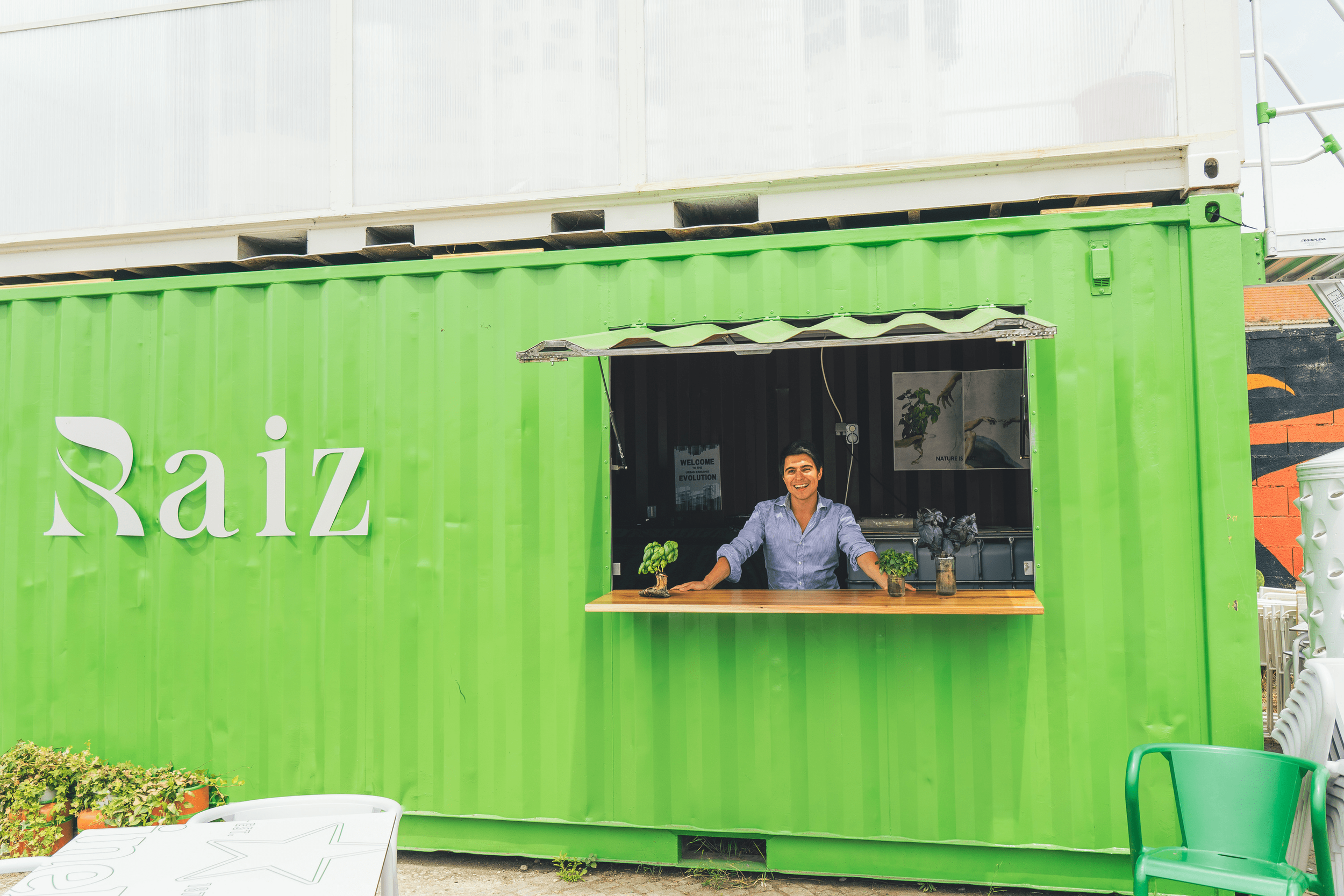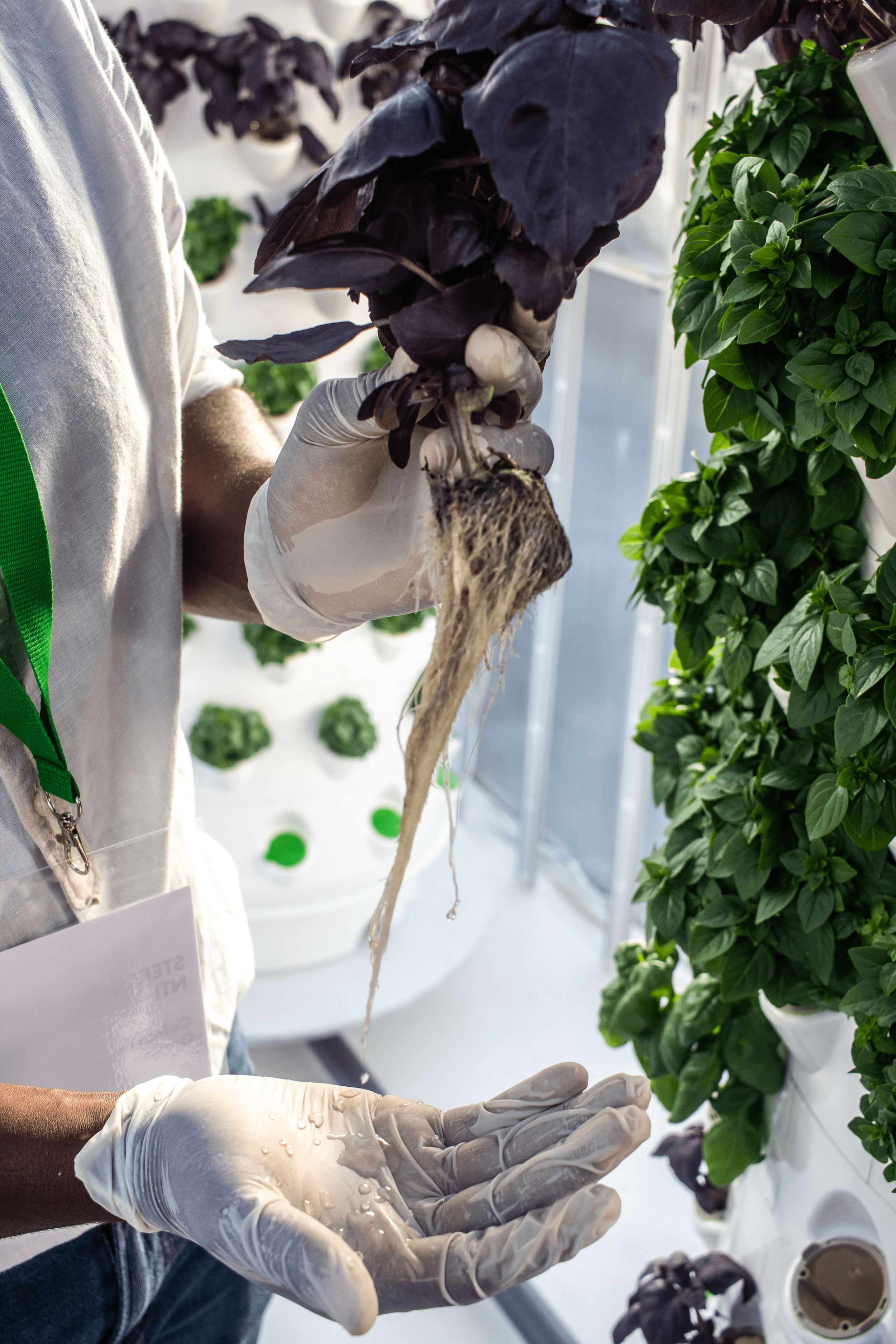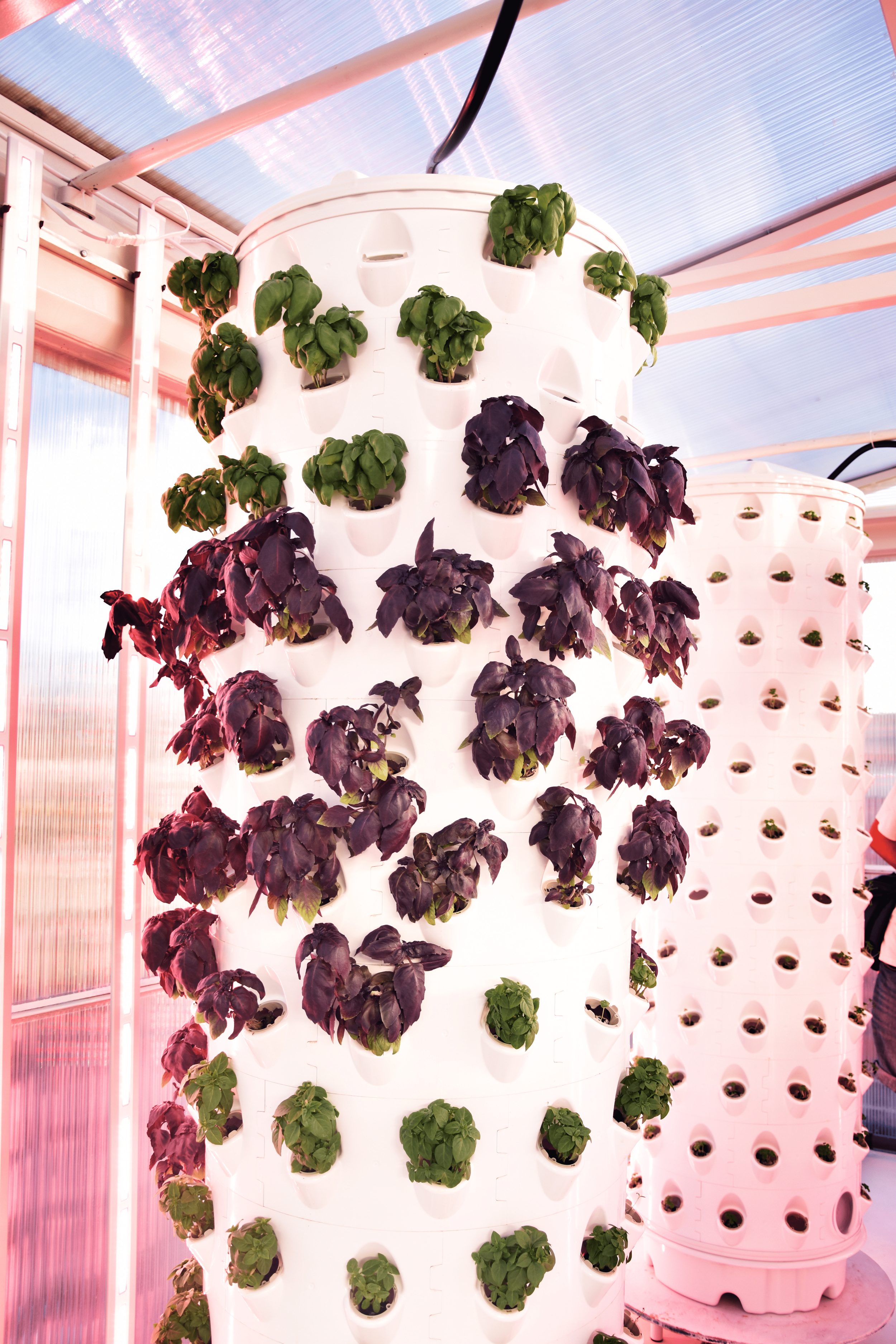Jan 23, 2023
Meet Raiz, the Vertical Farm Planned with Agritecture Designer

Editor’s Note: Agritecture (AGR) spoke with Emiliano Gutierrez (EG), Founder & CEO of Raiz, a vertical farm located in Lisbon, Portugal. An early adopter of Agritecture Designer, Gutierrez successfully opened his farm after using the resources provided to him through the platform. We wanted to learn more about what that journey looked like for him, what advice he has for other entrepreneurs, and what keeps him excited and motivated in the controlled environment agriculture (CEA) space. This interview has been edited for clarity and brevity purposes.
Interview conducted by: Isabelle Dom
January 20, 2023
AGR: Tell me about your company - its focus and purpose and where you're located.
EG: For sure. So, our purpose is to create a decentralized food system, meaning a greener food system, healthier communities, and healthier cities. So that's the overarching vision - creating a healthier relationship between food and people. And we're doing it by creating vertical farms, and our first one is in Lisbon.
AGR: How long have you been in business?
EG: We launched the farm the second of July this year [2022] so it's not not too long ago, like five months ago. And in terms of incorporating the company, we did that in August 2021 so a bit over a year, reaching a year and a half.
AGR: What crops are you growing and who are you selling them to?

EG: We've been growing different kinds of herbs, dill, basil, etc. And we're also growing high-protein crops like amaranth which is a very interesting niche we're looking to explore more and more - not only for the crops themselves, but for the potential of transformation into something else, like a high-value product or an added-value product. And next year, we're experimenting with fruits as well, tomatoes and other kinds of veggies, which is keeping us excited.
AGR: Are you mainly selling direct to consumer or are you selling to restaurants, grocers, etc.?
EG: We're selling to restaurants, mostly, but also keeping a part of it for consumers, especially in our direct-to consumer-angle. We have subscriptions, and we engage people with different events ranging from educational workshops to dinners and more like social gatherings by the farm, which we discovered also to be a very, well, niche but a profitable side of things.
AGR: Thinking back to when you incorporated to when you opened your farm in July, what were some of the biggest hurdles you met and how did you overcome them?
-min.png)
EG: Yeah, so a couple of them are establishing the right processes to run a CEA business or vertical farm, operating properly within the team, hiring people, and growing and ensuring the high quality of the crops, etc. What we did to address it and how we keep continuously evolving is through a lot of education. So, always going back to the basics, trying to simplify as much as possible and not to overcomplicate things. Another [hurdle] I would say is funding. The way I would recommend to address it is through tangible and shortterm wins without losing the longterm perspective and the longterm potential, right? So, if we can get a grant or raise by crowdfunding right now, let's do it while we prepare for larger [investment] rounds, which we are raising at the moment . And then the awareness bit. Vertical farming is, I think, still something very new. So it's how do we convey the right message in a concise and simple manner to motivate more people to join the movement but also of the whole transformation towards a more “sustainable” or a cleaner food system. So yes, that challenge is something that we need to do as an industry, as a whole, as well.
AGR: How did Agritecture Designer help you meet your business goals and launch your farm?
EG: Agritecture Designer provides a solid education around the industry that, to be honest, you couldn't get elsewhere. It's a very solid crash course on vertical farming and that foundation really helped me and the rest of the team to go in with a bit more preparation when starting to design the farm. The financial planning and projection tools are helpful for scenario planning and providing awareness of the different potential and different levers in terms of the systems, the crops, the volume, the area, etc., and how that all affects the bottom line. Since [we used it] before we actually launched the farm and started building it, it helped us have a very clear framework in terms of how to develop and what to develop and what to focus on. So that was, I would say, one of the most valuable things. And putting us in touch with different providers and having access to them is one of the most valuable things. And also the support of the Agritecture team, right? Henry [Gordon-Smith] was [at our farm] in-person as well, and we've been in touch with the team quite a bit. That's something that we appreciate a lot.
AGR: How do you think that Agritecture Designer will impact the overall industry?

EG: It definitely helps lower the barriers of entry for people who are coming from outside of the CEA field, which, if I'm not mistaken, is a big chunk of people. So if there are other entrepreneurs, like myself, it definitely provides the foundations for someone to go into the field without repeating the same mistakes or pitfalls. I think it could also really accelerate the deployment of new farms, especially with the [Partner Network] feature because [choosing equipment and finance providers] can take a lot of time, which eventually can lead to costly operations, and you know, time is money. So if you can effectively choose in a more efficient manner that really speeds things up and empowers people and that can really benefit the industry.
AGR: What advice do you have for other entrepreneurs as they navigate the planning stage of their CEA business?
EG: Go as in depth as possible in terms of education. Build a solid team, the complementary team, of course. If you're an engineer, then maybe having someone on the business side, on the growing side of things, and vice versa. Having a solid mix of people and different expertise is critical because you can't do it alone. [Back to] the first point, go as deep as possible into education because there are a lot of things that have been done, but there's also a lot of potential to innovate, right? Try to cross pollinate as much as possible with other fields. That's where technologies can converge and really create an impact. Last advice, reach out to as many people as you want and can have access to. I think everyone in the industry is friendly and looking to help. And there's a lot of knowledge already there. So don't hesitate to ask. It’s worthwhile.
AGR: Tell me about your big vision for the future.

EG: What I'd love to achieve in the future is how can we advance this technology in such a manner that we can reach an accessible price point and costs so that we can deploy the solutions where it matters the most. So whatever we design is very economical, but also with nature-based solutions and efficient yet low cost materials so that we can deploy farms in Africa and South America, in Asia, and really make a difference for the people that are there. That's part of the big vision.
AGR: What's driving you on a day-to-day basis and why CEA?
EG: On a day-to-day basis, it is making what's right for our community. And getting a bit personal, I guess, but really striving for achieving greatness both as an individual and as a team, and as a community, and aiming to drive evolution, to drive innovation and to create an impact. Because it's not easy times and it's imperative for us to keep building positive solutions and to keep building things that inspire and educate other people. So I think the fact that we, as an industry, are able to do it and make a dent - that's something that keeps me excited and motivated and drives me. Why CEA? Because I see it as a key component of the food system. It's not a silver bullet. We all know that. There needs to be a lot of integration with, for example, regenerative agriculture, tropical agriculture, other kinds of plant-based proteins, etc., but it's an important mix, right? And I feel we have a responsibility to do it right and to drive it forward so that people have fresh, local crops that are tasty and nutritious.

